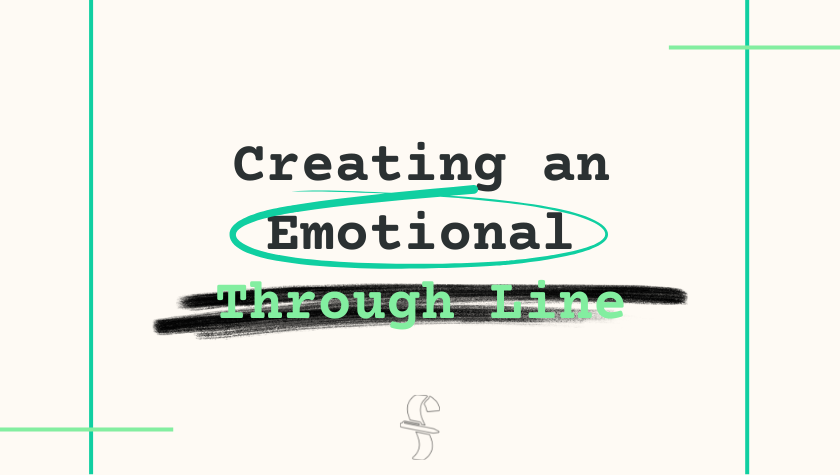Internal Conflict Vs. External Conflict
July 4, 2023
Over the years, I’ve read my share of scripts from aspiring screenwriters. If it’s a character-driven drama, there is plenty of internal conflict; if it’s an action/adventure, sci/fantasy or thriller/horror there’s a good deal of external conflict.
In most cases, it’s usually one or the other: a story that’s all about the protagonist’s emotional state or a story primarily concerned with a threat or physical obstacles.
Ideally, a screenwriter should have both in their script: internal conflict and external conflict.
If you watch produced feature films and television series and look for it, you’ll discover most of them have a constant bombardment of internal and external conflict; the two are reciprocal in narrative storytelling and often work hand in hand. Because of this, your spec script — whether it’s a feature screenplay or television pilot — will have a much greater chance of connecting with industry professionals if it contains both internal and external conflict throughout. At very least, it’ll make for a considerably stronger writing sample.
But what exactly are the differences between internal conflict and external conflict?

Internal Conflict = Emotional Conflict
In the simplest terms, internal conflict is emotional conflict; therefore, a writer can think of internal conflict as the emotional through line of their characters. In my article, “How To Create an Emotional Through Line in Your Screenplay,” I wrote about the importance of tracking your primary characters’ emotional state throughout your script: how are they feeling in every scene, how are they reacting to what’s happening to them or around them, etc.
This is also related to a character’s goals and motivations: what do they want most? This is a question every writer should know before writing their script, especially concerning their protagonist (i.e., the main character). If what they want most is a material reward (e.g., money; treasure; winning a competition), it should be underscored with a deeper emotional desire. For example, in the original Rocky, Rocky Balboa wants to “go the distance” with Apollo Creed to prove to himself that he’s not “just another bum in the neighborhood.”
In the Creed spinoff series, the protagonist Adonis Creed follows suit in which every one of his championship bouts is augmented with a strong internal conflict: in the first Creed film, Adonis wants to prove he’s legitimately his father’s son and “not a mistake.” In Creed II, Adonis and his opponent Viktor Drago are both wrestling with their father’s respective fates. And in Creed III, Adonis is looking to rectify sins and trauma from his troubled past.
Now ask yourself: would the Rocky and Creed films have struck such a chord with audiences if they were simply about winning boxing matches and that’s all their protagonists cared about? Regardless of the goal of your characters, there should always be a deeper conflict they’re looking to resolve.

External Conflict = Situational Conflict
On the flip side, external conflict is situational conflict. In other words, it’s the boxing match!
It’s also the various obstacles involved when pulling off a big heist, or dealing with a haunted house, or trying not to get caught by a pursuer, or trying to keep a home from being foreclosed or a business from getting shut down, or trying to stop the world as we know it from being destroyed, or any conflict that demands immediate attention in the character’s reality.
More often than not, the external conflict is the main concept and/or plot of the script. Depending on the genre, there might also be additional conflict caused by the larger conflict. For example, in a survival thriller the protagonist is in constant peril throughout the script and their initial attempts to escape their situation usually backfire and lead to further obstacles to overcome. Typically, survival thrillers don’t require the same degree of internal conflict because trying to stay alive is such a primal emotion, it overshadows all other emotions (a big reason for the subgenre’s popularity).
However, the more conflict, the better. So, if you’re able to insert lots of internal conflict even into a survival thriller, it could lead to a fuller and more resonating script.

A Web of Conflict
One of the most popular fictional characters of all time, Spider-Man is a prime example of internal and external conflict being successfully intertwined. From the original comic books to the most recent film series, Peter Parker’s emotional strife over his various personal problems and his responsibilities as a crimefighting superhero have been fueling Spider-Man stories for over half a century (as I wrote about in my article “Right Story, Right Character”).
2021’s Spider-Man: No Way Home has arguably the most internal and external conflict of any film in the series. The film begins with Spider-Man’s true identity being made public (external conflict). This event disrupts Peter Parker’s personal life, places his loved ones at risk, and causes the young man an excessive amount of stress (internal conflict).
He attempts to resolve this by having Dr. Strange alter reality to erase the public’s knowledge of Spider-Man's identity, but in doing so, they create an even bigger problem: there’s now a rift in the “Multiverse” and Spider-Man villains from parallel universes have crossed over (external conflict) and Peter feels responsible (internal conflict). The rest of the film deals with Peter’s struggle to resolve the above external conflict (the villains from the parallel universes) and eventually resolving his primary internal conflict (making a choice between his personal desires and his responsibilities as Spider-Man).
There’s never a scene in the film in which internal and external conflict isn’t cresting to the surface or pushing the story forward. Because of this Spider-Man: No Way Home emotionally resonated with audiences as well as entertained them.
Internal Conflict + External Conflict
Ultimately, a writer shouldn’t be thinking ‘internal conflict vs external conflict’ as much as internal conflict plus external conflict. Like parallel universes in a comic book adventure, they’re two different spaces operating on the same plane. Moreover, they enhance one another and will enhance your screenplay.
So if you’ve imagined a great concept for a film or TV series, ask yourself the following questions: will the concept generate an equal amount of internal and external conflict? What are the main characters’ emotional stakes throughout the script? Will the internal and external conflict be intertwined throughout?
Answering these questions will not only help test the strength of your script’s concept…
It’ll put you in the right mindset to start writing it!
Written by: Edwin Cannistraci
Edwin Cannistraci is a professional screenwriter. His comedy specs PIERRE PIERRE and O’GUNN both sold with more than one A-list actor and director attached. In addition, he’s successfully pitched feature scripts, TV pilots and has landed various assignment jobs for Universal, Warner Bros, Paramount and Disney.- Topics:
- Screenwriting & Craft




